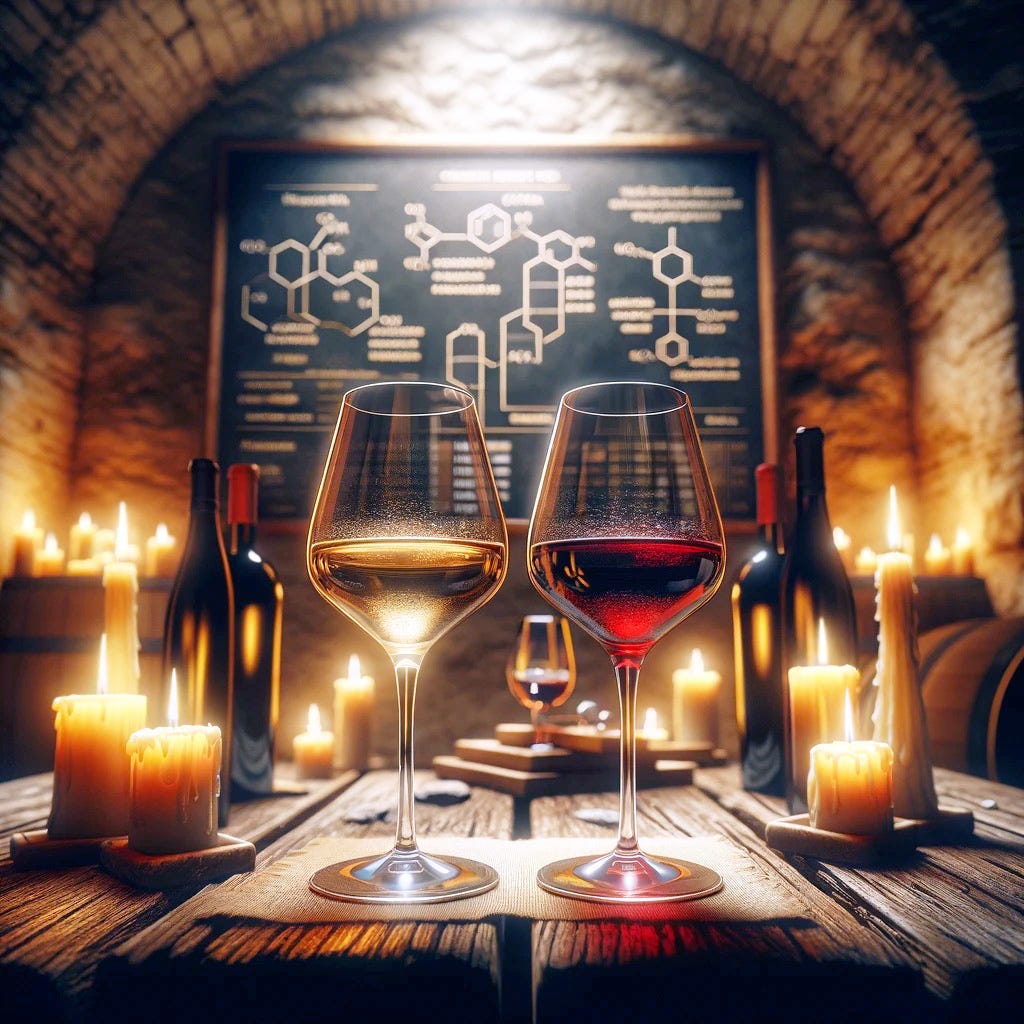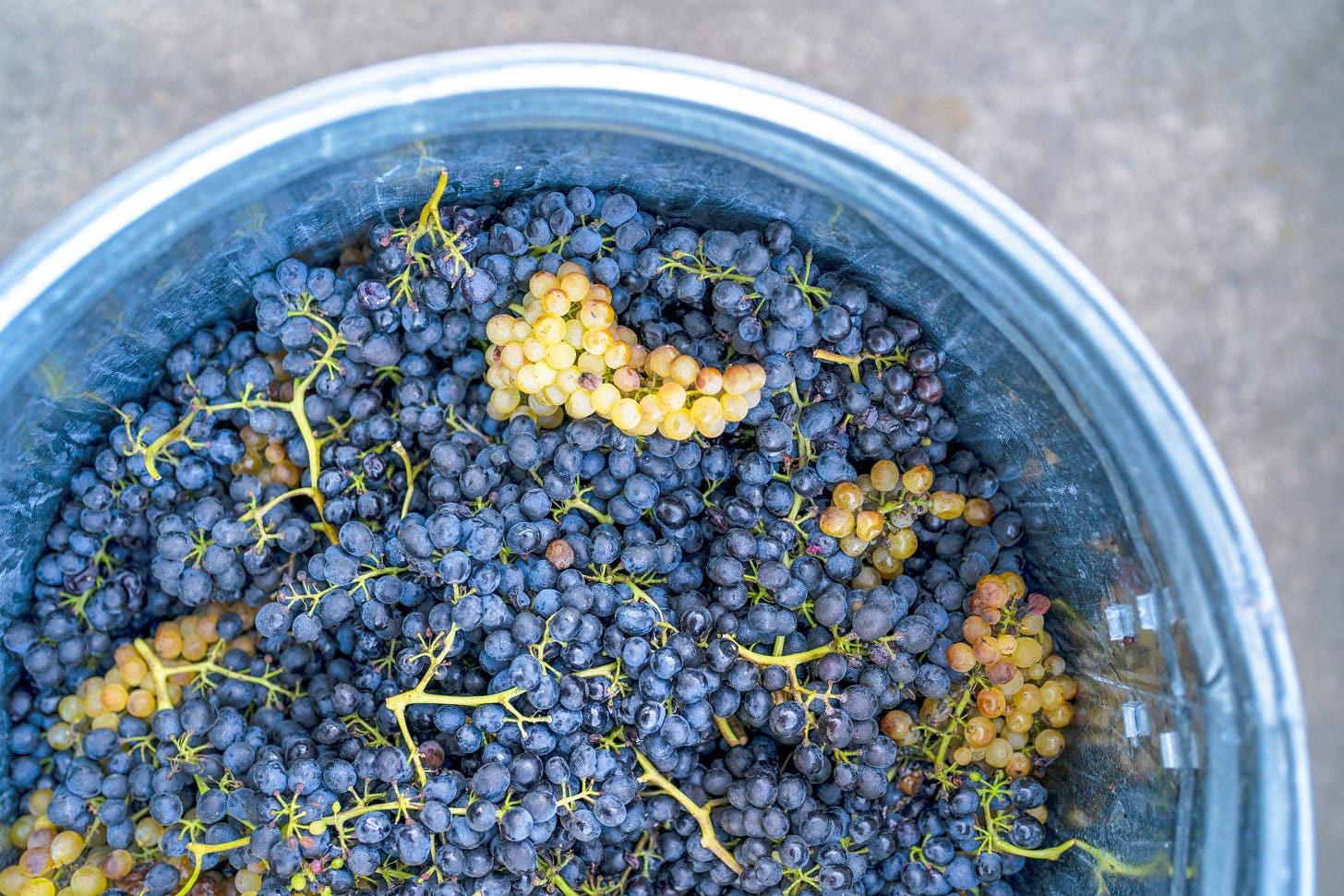Exploring primary and secondary characteristics in wine
By Dan Berger
NAPA VALLEY, Calif. — With February's arrival we moved past Dry January, an initiative in which many people choose to abstain from alcoholic beverages. The reasons for participating vary, including health considerations, personal challenges or as a counterbalance to holiday indulgences from Thanksgiving through New Year’s Eve.
As someone who promotes moderate and mindful wine consumption, my approach steers clear of both overindulgence and complete abstention. Adopting a year-round approach to wine consumption reflects my personal choice, providing me a year-round enjoyment of its place in culinary and cultural contexts.
Personally, I can't imagine a single lunch or dinner without a sip of frumenti that complements the food. It's less about the alcohol and more about the flavor, with a capital F. So in January I abstained from abstention.
As soon as February arrived, however, I read an internet article that was distressing. The writer spoke of the worldwide decline in wine sales, which he attributed in part to what he said was consumers’ declining interest in flavor.
Not so incidentally, he did say that wine sales may well have been hurt by Dry January. He said wine-drinkers may have been bothered by wines’ failure to be complex – that wine needs something more. What exactly that “more” was he did not define.
I’d be happy to accept this “lack of complexity” argument except for a few problems, one of which is that very few people have ever defined the word “complexity” in wine. Which got me to thinking: Just what is complexity anyway? For me it starts with two elements: the primary elements of a wine’s personality and its “other” charms.
The primary — its “A” attributes — relates to its varietal characteristics. It’s chardonnay’s citrus, sauvignon blanc’s herbs, gewürztraminer’s gardenia/spice, merlot’s olive/tea/cherry, pinot gris’ fennel, grenache’s pomegranate.
A wine’s secondary components – its “B” attributes or complexity – relate to distinctive elements offered by a specific winery’s handling of and rendition of that grape in a specific year, from a particular plot of soil or in how the wine was crafted.
A attributes (primary characteristics) examples:
Chardonnay’s citrus (lemon, lime, grapefruit, etc.) notes
Sauvignon blanc’s herbaceous (grass, mint, eucalyptus, bell pepper) aromas
Gewürztraminer’s gardenia/spice (ginger, clove, cinnamon, nutmeg) undertones
Merlot’s cherry flavors
Pinot gris’ fennel accents
Grenache’s pomegranate essence
B attributes (secondary characteristics — complexity) examples:
Cabernet sauvignon’s saddle leather nuances
Merlot’s mocha undertones
Zinfandel’s “rustic” (earthy) elements
Chenin blanc’s (like that from Vouvray) minerally (wet stone, flint, chalk) notes
Syrah/shiraz’s peppery (black and white) accents
It's easy to see from this vague definition that wine is not a simple “pour-sip-decide whether you like it” proposition. A bit of thought is suggested. And the more you know about a wine, its grape or region, the more you can make an informed assessment about what it is and whether you think it conforms to what you expected, which allows you to decide whether you like it a little, a lot or not at all.
Every wine can create lots of discussion. It starts when you first pull the cork and take a sip. Then a few more or many minutes later you take a second sip and you get a second chance to make a decision. A couple of hours later, when the wine is at a slightly different temperature and has been exposed to a little air, you get a chance to make yet another decision.
Some people do not spend any time with wine. They pour, sniff and sip within seconds. There’s no introspection. No careful analysis. But for me every wine is like a human. The more you get to know him or her, the more you can better assess who they really are. Instant analysis can lead to judgmental errors.
Are the primary attributes of a particular wine, the “A” elements, so charming that they’re all you really need to appreciate it? Then you’re really not looking for complexity. With some people, all you need to know is what’s on the surface. But what if the wine’s primary-ness isn’t all that interesting? Perhaps the “B” elements provide more, so you can appreciate the wine even more.
A few months ago, I met a man deeply fascinated with wine. Our discussions were engaging. During our third meeting, I learned of his extensive knowledge of classic films, a topic that also captivates me. As our conversations progressed, it became clear there were more secondary layers of our shared interests worth exploring.
Who doesn’t love Chianti? I prefer Chiantis with food and don’t love heavy, rich versions. I’m much more likely to appreciate a simpler Chianti than ones designated “Riserva” because under Italian law it is permissible to use cabernet sauvignon blended into wines with such a designation. And when I want Chianti, I want it to show Chianti character, not cabernet.
I also love cabernet sauvignon, and I prefer to see it in wines that are designated as cabernet sauvignon on the label. However, too few such wines these days display cabernet aromas.
Some people think I am a little too rigid when it comes to assessing cabernet. For me, the “A” attributes of a good cabernet start with varietal-ness. When I don’t see any at all, I am left with only the secondary characteristics on which to make a judgment, and almost never is that sufficient.
To use a broad generalization, European wines typically have at least as many “B” characteristics as they do primary elements. It’s why so many wines made from continental climates such as France, Italy and Germany display such complexities, such intricacies that are often lacking in California wines.
Our wines often are described as fruit-driven. It’s one of the most charming aspects of the wines we produce. That doesn’t mean we can’t make euro-styled wines. We can. But Americans have long been trained to appreciate fruit. So it isn’t particularly beneficial for California winemakers to go out of their way to create euro-styled wines. They might not sell as quickly.
By remaining true to the fruit, some California winemakers have diminished some of the “B” elements that might be possible to build into some of our wines. This may be one of the reasons why mainly fruit-driven California wines seem to be somewhat simplistic to people who are seeking more complexity.
It is unclear exactly why wine sales have declined. But if my hunch is correct, that a lack of complexity is part of that reason, perhaps the growing homogeneity of many California wines is playing a role in how people view them.
Today I purchase far more European and New Zealand wines. I find more “B”-ness in them. And it is the “B” constituents that make wines so endlessly fascinating.
If today's story captured your interest, explore these related articles:
Dan Berger has been writing about wine since 1975.






A very Interesting perspective. Thank you!
Too many wine articles